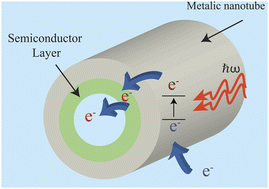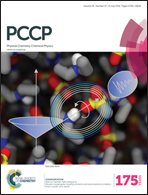Theoretical analysis of hot electron injection from metallic nanotubes into a semiconductor interface
Abstract
Metallic nanostructures under optical illumination can generate a non-equilibrium high-energy electron gas (also known as hot electrons) capable of being injected into neighbouring media over a potential barrier at particle boundaries. The nature of this process is highly nanoparticle shape and size dependent. Here, we have derived an analytical expression for the frequency dependent rate of injection of these energetic electrons from a metallic nanotube into a semiconductor layer in contact with its inner boundary. In our derivation, we have considered the quantum mechanical motion of the electron gas confined by the particle boundaries in determining the electron energy spectrum and wave functions. We present a comprehensive theoretical analysis of how different geometric parameters such as the outer to inner radius ratio, length and thickness of a nanotube and illumination frequency affect the hot electron injection and internal quantum efficiency of the nanotube. We reveal that longer nanotubes with thin shells and high inner to outer radius ratios show better performance at visible and infrared frequencies. Our derivations and results provide the much needed theoretical insight for optimization of thin nanotubes for different hot electron based applications.


 Please wait while we load your content...
Please wait while we load your content...